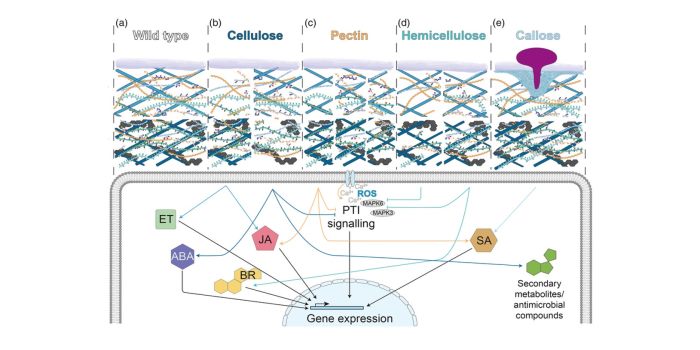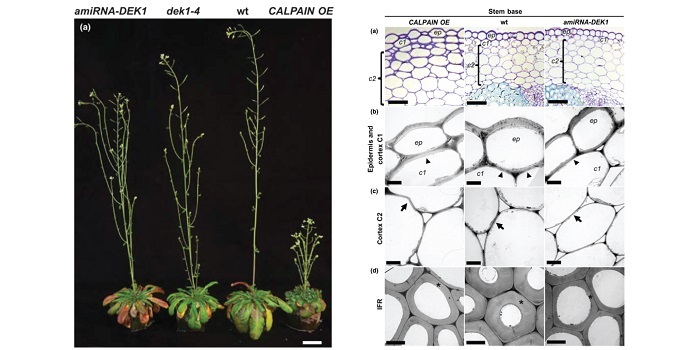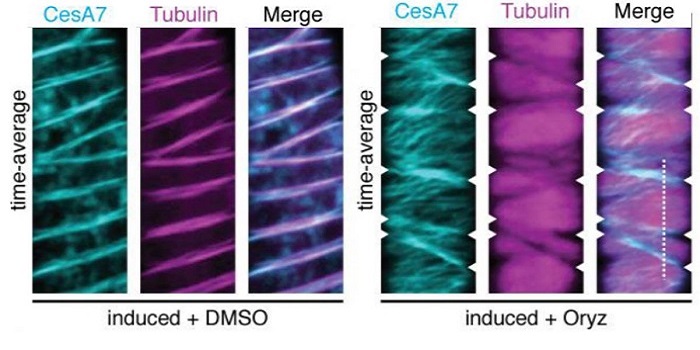
Update: Diffuse Growth of Plant Cell Walls
By Daniel Cosgrove
The primary wall of a growing cell is a versatile, subtle, and dynamic structure, with unique properties and functions in the life of the plant (Burton et al., 2010). When a cell grows, its wall stretches irreversibly as the cell enlarges in volume. Cells can start and stop this…

Coordinating Cell Walls and Cell Growth: A Role for LRX Extensin Chimeras
To regulate the addition of cell wall components as cells expand and to control changes in cell wall composition as cells differentiate, there must be a feedback system that senses the state of the cell wall and transmits this information. The mechanisms underlying cell wall-intracellular signaling remain…

Review. Plant cell wall-mediated immunity: cell wall changes trigger disease resistance responses
Plant cell walls have recently been revealed as an essential factor of plant environment monitoring system, much more than just a passive defensive barrier as previously thought. In a recent work, Bacete et al. have reviewed how changes to plant cell wall integrity affect disease resistance. More specifically,…

Arabidopsis DEFECTIVE KERNEL1 regulates cell wall composition and axial growth in the inflorescence stem
Plants can reach impressive heights, thanks to the mechanical stability provided by the cell walls. The required strength is ensured by coordination of cell wall deposition and cell expansion. Plant-specific calpain (DEK1) regulates axial stem growth, as lines overexpressing the calpain domain develop…

Evidence for Two Distinct Stages in Secondary Cell Wall Formation of Xylem
A hallmark of xylem development is the deposition of secondary cell wall material in specific patterns (reviewed in Patrick et al, 2007). These cell wall deposits structurally reinforce the xylem to withstand negative pressure during water transport and differ in different xylem cell types. While it…

Nanoscale movements of cellulose microfibrils in primary cell walls ($)
0 Comments
/
Cell walls are complex mixtures of cellulose microfibrils, proteins and other materials. Their mechanical properties can be measured and modeled, but it is not always simple to translate these measurements to changes at the molecular level. Zhang et al. used atomic force microscopy to provide an unprecedented…

